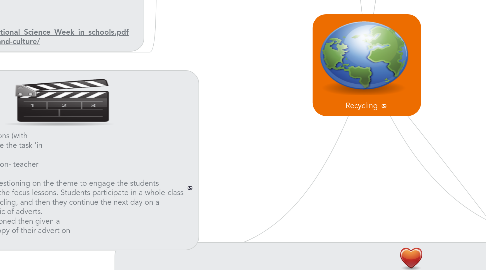
1. References: * https://intranet.ecu.edu.au/__data/assets/pdf_file/0017/207080/how-to-write-a-risk-assessment-and-management-plan.pdf • http://www.comcare.gov.au/__data/assets/pdf_file/0006/39570/Officewise_OHS1_Apr_10.pdf • http://smah.uow.edu.au/content/groups/public/@web/@sci/@chem/documents/doc/uow055726.pdf • http://www.safety.uwa.edu.au/health-wellbeing/physical/ergonomics/workstation • www.safeworkaustralia.gov.au/.../Managing%20Electrical%20Risks%20in%20the%20Workplace%20... • http://www.comcare.gov.au/__data/assets/pdf_file/0006/39570/Officewise_OHS1_Apr_10.pdf • http://www.decd.sa.gov.au/efs/files/pages/HallettCovePreschoolCaseSt.pdf • http://consultation.australiancurriculum.edu.au/Static/docs/Technologies/Draft%20Australian%20Curriculum%20Technologies%20-%20February%202013.pdf • http://www.edutopia.org/assessment-guide-description • http://www.adcet.edu.au/View.aspx?id=3956 • http://www.det.act.gov.au/__data/assets/pdf_file/0011/297182/Teachers_Guide_to_Assessment_Web.pdf • http://education.jhu.edu/PD/newhorizons/strategies/topics/Assessment%20Alternatives/ • http://www.acara.edu.au/verve/_resources/shape_of_the_australian_curriculum_geography.pdf • * http://www.aitsl.edu.au/docs/default-source/apst-resources/illustrations-of-practice-resources/mount-gambier-high-school.pdf • http://www.aitsl.edu.au/docs/default-source/default-document-library/leadership_and_learning_with_ict_-_voices_from_the_profession • http://coolaustralia.org/activity/traditional-culture-had-nothing-to-waste/ • http://www.npcia.org.au/index.php/sustainable-packaging-solution/apc-reworked • http://www.zerowaste.sa.gov.au/upload/resource-centre/publications/reuse-recovery-and-recycling/5469/Recycling%20Education%20Resource-ZeroWasteSA.pdf • http://clients.squareeye.net/uploads/eaquals2011/documents/Prague_conference_materials/Grynnerup_paper_OK.pdf • http://www.consumhttp://kids.niehs.nih.gov/explore/reduce/er.ftc.gov/articles/0203-language-recycling • http://yourenergysavings.gov.au/waste/reducing-recycling/reducing-waste/reduce-re-use-recycle • http://www.p21.org/news-events/p21blog/1435-strategies-to-promote-critical-thinking-in-the-elementary-classroom • http://www.criticalthinking.org/pages/critical-thinking-in-everyday-life-9-strategies/512 • http://www.lutheran.edu.au/assets/Uploads/pr/Conference%20Papers/ACLE2/Electives/ThackerAlison%20.pdf • http://www.australiancurriculum.edu.au/GeneralCapabilities/Pdf/Critical-and-creative-thinking
2. Step-by-step instructions (with images to demonstrate the task 'in action') • Whole class instruction- teacher directed • Use open-ended questioning on the theme to engage the students understanding: using the focus lessons. Students participate in a whole-class brainstorm about recycling, and then they continue the next day on a brainstorm on the topic of adverts. • Students are transitioned then given a template for a draft copy of their advert on recycling
2.1. Age/development considerations: According to the technologies curriculum students in years 3-6 learn about the benefits of the environment and how human impact effects the way that the environment can cater for our needs. They develop a sense of ethical identity responsibility and an identity that allows them to make important decisions that impact their future choices. There has been much talk on the subject of environmental sustainability within the education sector. There is a huge emphasis and focus on the early childhood education sector, to promote and develop positive environmentally sustainable skills. Students consistently develop their environment sustainability understanding throughout their primary years either independently or collectively as a whole classroom focus.
2.1.1. Safety and risk management: According to Edith Cowan University's Risk Management Plan, the purpose of the plan is to be able to address any problem or issue before it happens (Faculty of Engineering, Health and Science, n.d). The university of Western Australia also puts forward some safety tips that help reduce the negative impacts of computers on their physical health. Some of their tips are: Make sure that the monitor is at eye length, and the keyboard is within arm-span reach * Desks and chairs should be high enough to allow for a 90 degree bend in the elbows and knees
2.1.1.1. Alternative approaches to assessment: Teachers are able to assess student achievement by implementing activities that allow students to demonstrate their understanding of recycling, such as the following different types of authentic assessment: Observation Essays Interviews Performance tasks Exhibitions and demonstrations Portfolios Journals Teacher-created tests Rubrics Self- and peer-evaluation Reports Posters Advertisements http://www.edutopia.org/assessment-guide-description
3. Other areas of cross curriculum integration: • Arts: Media Arts • Geography • English • History • Mathematics
3.1. Students from diverse backgrounds, including activities that demonstrate a broad understanding of AITSL histories, cultures and languages: Many primary schools in WA have been involved in the reduce, reuse recycle plan. Ocean Reef primary school is involved in such a initiative. The whole school participates in ensuring that their classrooms are free of paper waste by having a recycling bins in the classroom. I remember a personal experience in my 1st year practicum classroom where my class won the recycling paper award in 2012. Reflecting and responding Reflect on their learning to propose individual and collective action in response to a contemporary geographical challenge and describe the expected effects of their proposal on different groups of people (ACHGS039) Recycling in Culture: Blue Wave is an organisation in Brazil that recycles plastic bottles, which they produce 6 billion plastic bottles per year but unfortunately on recycle 2% of them. The initiative has been created in order to give people more jobs for the poor and needy. Special Needs Schools The Science Week program: The science week program encourages students at Saint Mary MacKillop's Catholic school students to get involved in biological sciences that allow students to have one on one experiences with both biological and non-biological materials. Students also receive genuine friendly interactions and care from professionals. Find more info on their initiatives at: http://www.scienceweek.net.au/wp-content/uploads/ScienceWeekFiles/National_Science_Week_in_schools.pdf http://www.globalgiving.org/projects/environmental-awareness-recycling-and-culture/
4. Design and Technologies knowledge and understanding
4.1. Technologies and society
4.1.1. Its alignment with the Australian Technologies curriculum 6.1 Investigate how people in design and technologies occupations address competing considerations including sustainability in the design of products, services, and environments and for current and future use
4.1.2. Cross curriculum abilities: Years 5 and 6 Band Description Students develop their use of structure, intent, character and settings by incorporating points of view and genre conventions in their compositions. They explore and use time, space, sound, movement, lighting and technologies. They identify the variety of audiences for which media artworks are made. They explain the purpose and processes for producing media artworks. Plan, produce and present media artworks for specific audiences and purposes using responsible media practice (ACAMAM064)
5. Strategies to enhance critical thinking: According to Stacey Lange, Dean of the Walker Elementary School in America, she describes the following strategies to effectively foster critical thinking: * Inquiry * Questioning * Reasoning * Collaboration * Problem-solving * Advocacy "For us, critical thinking happens when students analyze and evaluate evidence, arguments, claims and beliefs. They can then learn how to make judgments and decisions based on others' points of view, interpret information and draw conclusions." http://www.p21.org/news-events/p21blog/1435-strategies-to-promote-critical-thinking-in-the-elementary-classroom
5.1. Focus questions: • What is recycling? • How do we recycle? • What can we recycle? • What are the benefits of recycling? • What is an advert? • What does it look like? • What goes in an advert?
5.1.1. Materials: • Microsoft publisher software • Facts on recycling • Pictures • Catchy slogan to advertise – Title and subheading Extra materials: • Newspapers, magazines and poster examples • Past and present posters
